Best Lakes for Hunting and Fishing in Kansas
In an online study, Kansas ranks as one of the most boring states to live in or visit, but we beg to differ. Make a point to visit any of the many lakes in the Wheat State and it will shatter this notion. From massive wetland complexes supporting extensive wildlife to full-on glamping experiences, Kansas is like one giant outdoor recreational playground.
Perry Lake is part of a nationally recognized trail system and Melvern Lake provides an indoor, heated fishing pier. Keep looking and you will find lake areas boasting of shooting ranges, sailing clubs, and children’s fishing ponds. Trails for horseback riding and mountain biking are at several Kansas lakes and many are ADA-accessible. On your way to any of these locations, be sure to make a stop at the World’s Largest Ball of Twine!
Kansas lakes provide hunting opportunities for deer, beaver, pheasant, quail, duck, geese, and wild turkey. Many lakes began as flood prevention necessities and turned into recreational dreams. Today visitors and locals find many types of lake experiences across the state: big to small, deep to shallow.
Tuttle Creek Lake
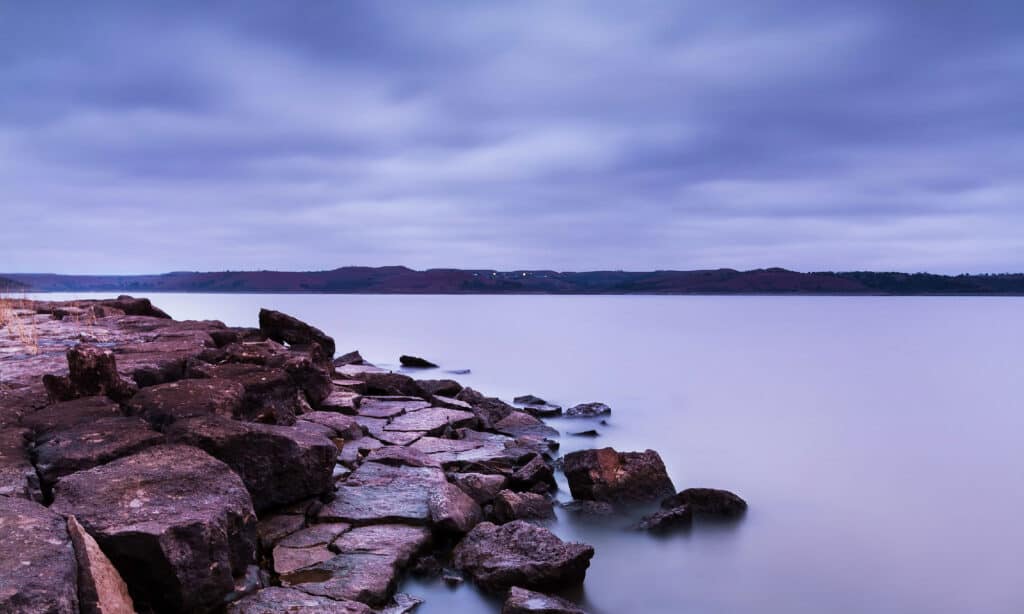
iStock.com/tomofbluesprings
- Surface Area: 12,500 acres
- Max Depth: 50 Feet
- Camping/Overnight Available: Yes
- Boating/Docks Available: Yes
- Swimming Permitted: Yes
- Fishing Permitted: Yes
- Best For: Second Largest Lake In Kansas, Shooting Range, Sailing, Fishing, Hunting
Tuttle Creek Lake originally came into being for flood control to help the surrounding areas historically facing substantial flooding. Today, the lake is in use extensively by anglers, hunters, boaters, and water sports enthusiasts. It’s the second largest lake in Kansas sporting an impressive one hundred mile of wooded shoreline complete with many recreational areas, nature trails, camping sites, and even an artificial beach.
The lake and attached river are stocked yearly with Rainbow trout. Other species anglers catch at Tuttle Creek Lake include largemouth bass, blue catfish, flathead catfish, channel catfish, rainbow trout, walleye, crappie, sunfish, saugeye, and white bass. Boating is potentially dangerous at Tuttle Creek Lake due to trees and other debris under the water, so be extra careful!
Visitors stay at eight campgrounds scattered around the lake. Take the time to check out River Pond below the dam for perfect paddling opportunities. Tuttle Creek State Park provides twelve hundred acres of land to explore when fishing isn’t enough. In total, over sixteen thousand acres of land surrounding the lake are enhanced for excellent hunting and wildlife viewing. Look for turkey, white-tailed deer, quail, pheasant, and waterfowl when in the area.
Waconda Lake
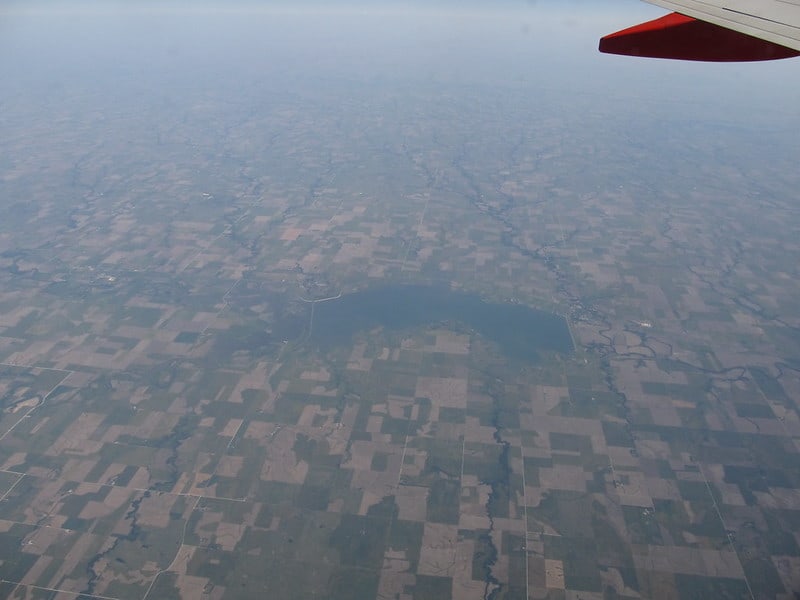
Ken Lund / flickr – License
- Surface Area: 12,586 acres
- Max Depth: 45 Feet
- Camping/Overnight Available: Yes
- Boating/Docks Available: Yes
- Swimming Permitted: Yes
- Fishing Permitted: Yes
- Best For: Hunting, Fishing, World’s Largest Ball of Twine, Relatively Stable Water Levels
Waconda Lake is seated in the Kansas Great Plains, specifically the north-central Smoky Hills region of the state. The lake, referred to as Glen Elder Reservoir, is one of Kansas’ most scenic and popular outdoor recreational destinations. Visitors also explore the attached thirteen thousand, two hundred acre Glen Elder Wildlife Area and Glen Elder State Park.
Fishing is fantastic at the lake with anglers reporting catches of channel catfish, crappie, flathead catfish, striped bass, walleye, and white bass. Hunting is another popular activity at the lake and surrounding area with mule deer, pheasants, quail, turkeys, white-tail deer, doves, ducks, and geese regularly taken. The lake provides over twelve thousand acres of public land for hunting purposes.
Birdwatching is worth it at Waconda Lake! Golden and bald eagles sitings are frequent during the winter months. Looking to check off a bucket list item? The world’s largest ball of twine resides at nearby Cawker City. The lake provides relatively stable water levels due to lower demand on its resources than some of the other lakes in the state; helpful as you plan boating, fishing, and hunting excursions.
Perry Lake
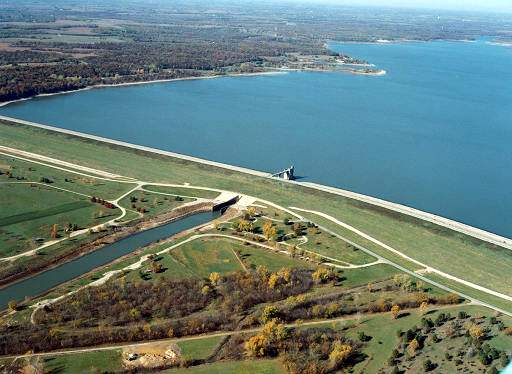
Unknown employee(s) of the U.S. government (Corps of Engineers) / This file is a work of a U.S. Army soldier or employee, taken or made as part of that person’s official duties. As a work of the U.S. federal government, it is in the public domain in the United States.
- Surface Area: 11,150 acres
- Max Depth: 55 Feet
- Camping/Overnight Available: Yes
- Boating/Docks Available: Yes
- Swimming Permitted: Yes
- Fishing Permitted: Yes
- Best For: Bassmaster.com Best Bass Lakes, Crappie & Channel Catfish, Perry Lake Trail, Equestrian Activities
Perry Lake is situated in the northeastern corner of Kansas, about thirty minutes by car from Topeka. This is another lake created to maintain flooding issues on both the Delaware and Kansas rivers. The lake and its state park offer a wide range of amenities, from camping, fishing, and boating to a nationally recognized trail system with over twenty-five miles specifically designated for horses.
The lake’s one hundred and sixty miles of shoreline provide ample opportunities to anxious anglers looking to hook a crappie, channel catfish, white or largemouth bass; the lake’s most popular species. Looking for something else to fish? Bluegill, sauger, and walleye also live in this water system. The mudflats on the lake’s north side are great for channel catfish or utilize the two boat ramps available for deeper water fishing.
Wildlife is everywhere around the lake and Perry Lake Trail. Look for white-tailed deer, cottontails, wild turkeys, coyotes, raccoons, and doves while there. The area around the lake provides a nearly endless amount of camping options, even campsites available along the equestrian trail for visitors with horses.
Cheney Reservoir
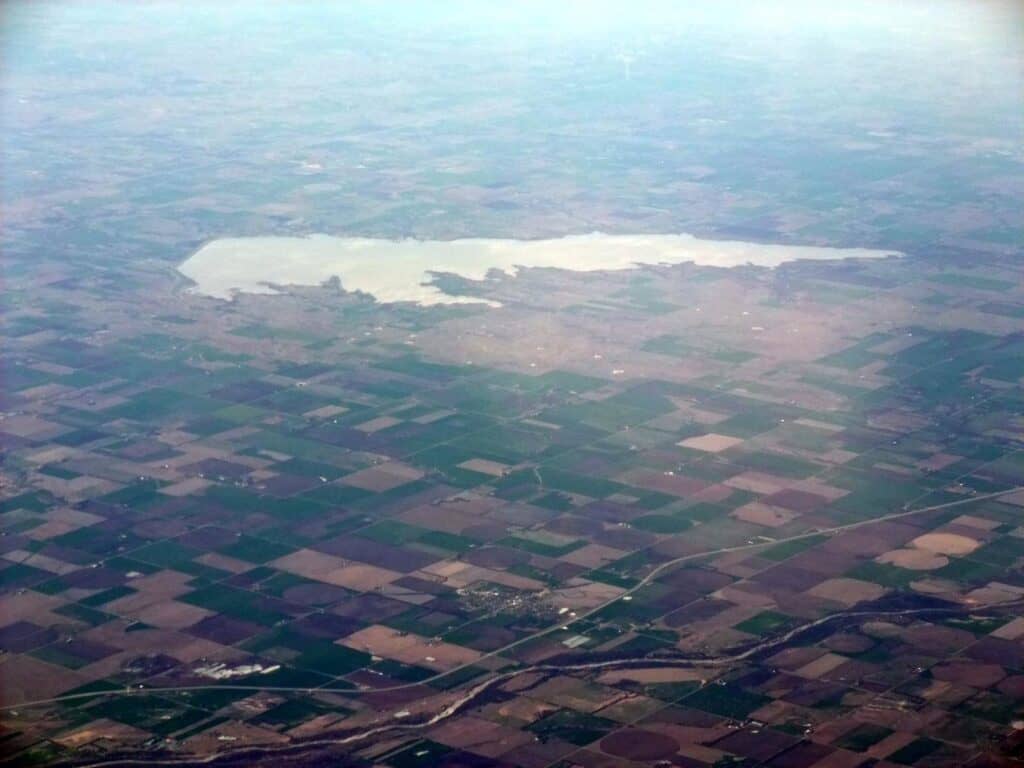
Kurayba / flickr – License
- Surface Area: 9,537 acres
- Max Depth: 49 Feet
- Camping/Overnight Available: Yes
- Boating/Docks Available: Yes
- Swimming Permitted: Yes
- Fishing Permitted: Yes
- Best For: Premiere Outdoor Recreational Area In Southern Kansas, Ninnescah Sailing Center, Shooting Range, Swimming, Wildlife Viewing, National Sailing Regattas
Cheney Reservoir, located in the southern part of Kansas, is known as one of the premier outdoor recreational areas in the state. Residing twenty-four miles west of Wichita, Kansas and Cheney Rervoir provides approximately seventy percent of the city’s water supply. Over two hundred thousand people visit the lake’s sixty-seven-mile public shoreline each year.
Anglers expect to find channel catfish, crappie, striped bass, walleye, white bass, and wiper in the lake. Two piers and many shoreline options are available; the entire shoreline is public! The lake experiences regular high winds, making it a hot spot for national sailing regattas and sailing enthusiasts. Take a seat on the shore and observe hundreds of sailboats on the lake at a time.
The reservoir is a popular hunting ground for deer, ducks, geese, doves, pheasants, quail, rabbits, and wild turkeys. You may also observe beavers, bobcats, muskrats, opossums, raccoons, red foxes, and skunks. Visitors take note, the reservoir and its amenities are unavailable from September fifteenth to March first each year for wildlife conservation and protection purposes.
Wilson Lake
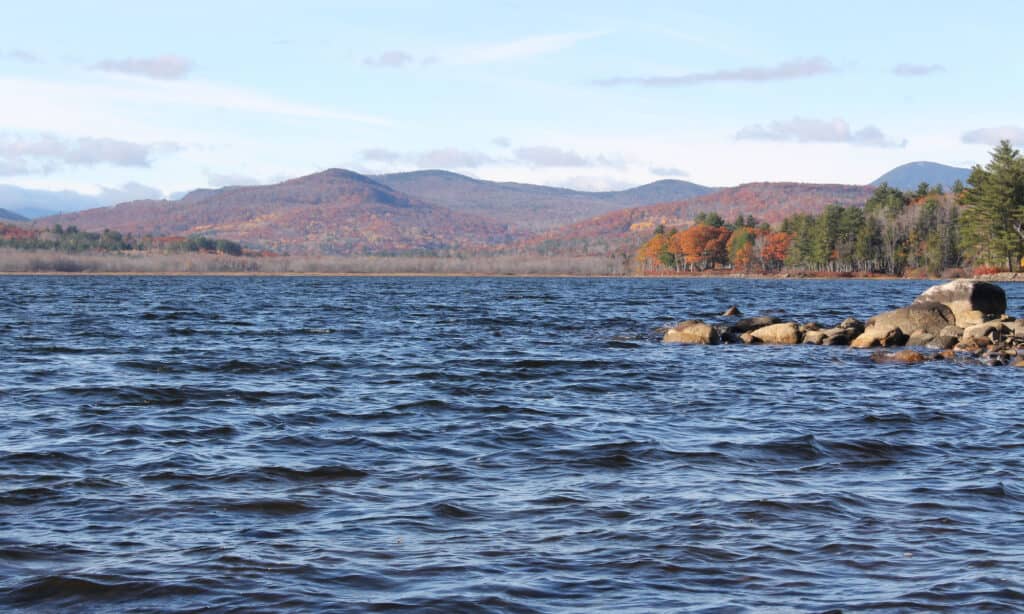
Madelyn Hart/Shutterstock.com
- Surface Area: 9,020 acres
- Max Depth: 65 Feet
- Camping/Overnight Available: Yes
- Boating/Docks Available: Yes
- Swimming Permitted: Yes
- Fishing Permitted: Yes
- Best For: Clearest Lake In Kansas, Sport Fishing, Hunting, Wilson State Park, Rocktown Natural Area, ADA-Accessible Cedar Trail
Located in central Kansas, Wilson Lake’s creation provides flood control, irrigation, navigation enhancement, water quality assurance, recreation, and wildlife management. Wilson Lake is one of the clearest lakes in the state of Kansas and known for swimming beaches, hiking trails, camping facilities, and hunting areas.
Striped bass and walleye fishing make Wilson Lake a famous fishing spot. You will also find black bass, channel catfish, crappie, smallmouth bass, striped bass, and white bass. The lake provides multiple boat launch facilities and a marina. If hunting is your preference, the lake provides many opportunities with deer, ducks, geese, prairie chickens, common pheasants, quail, rabbits, and wild turkeys.
Expect to see deer, bobwhite quail, waterfowl, songbirds, and migratory birds around the lake and at Wilson State Park to photograph and observe. Rocktown Natural Area showcases natural sandstone pillars ranging in height from fifteen to thirty feet! There is an ADA-accessible one-mile paved loop called the Cedar Trail in the Otoe area for visitors with disabilities.
El Dorado Lake
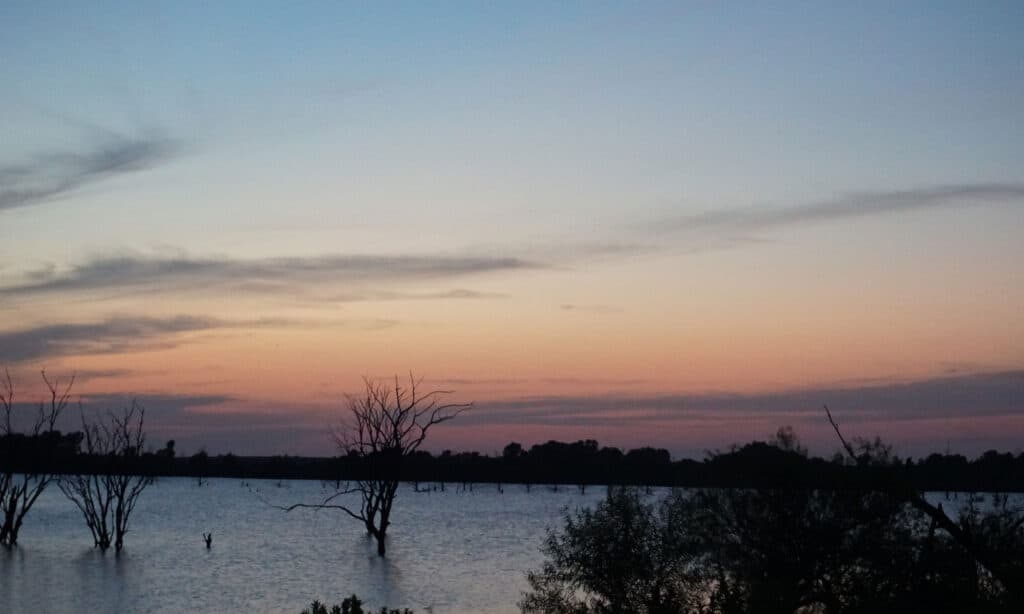
iStock.com/Erik Loera
- Surface Area: 8,000 acres
- Max Depth: 60 Feet
- Camping/Overnight Available: Yes
- Boating/Docks Available: Yes
- Swimming Permitted: Yes
- Fishing Permitted: Yes
- Best For: Winter Trout Fishing Below Dam, Stocked Rainbow Trout Fishing, Hunting, Flathead Catfish & Walleye Fishing
El Dorado Lake is located in the southeastern area of Kansas, about forty-five minutes outside of Wichita. Something for everyone here! Take time for biking, boating, water skiing, jet skiing, and horseback riding. Four full-service campgrounds at the lake provide everything from beaches to horse trails and laundry facilities.
Anglers report regular catches of flathead catfish, walleye, and freshwater drum along the lake’s ninety-seven miles of precious shoreline. Rainbow trout are stocked yearly for those carrying a special permit. Look for largemouth bass, channel catfish, black crappie, white crappie, black bullhead, white bass, carp, smallmouth bass, and bluegill when out on the water.
Take time out and observe the beavers, bobcats, coyotes, deer, collared lizards, Canadian geese, warblers, tree swallows, bald eagles, meadowlarks, common nighthawks, greater prairie chickens, chickadees, cardinals, woodpeckers, raccoons, hawks, vultures, and mink. El Dorado Lake provides a hunting area north of the waters for dove, rabbit, quail, prairie chicken, turkey, pheasant, and squirrel.
Clinton Lake
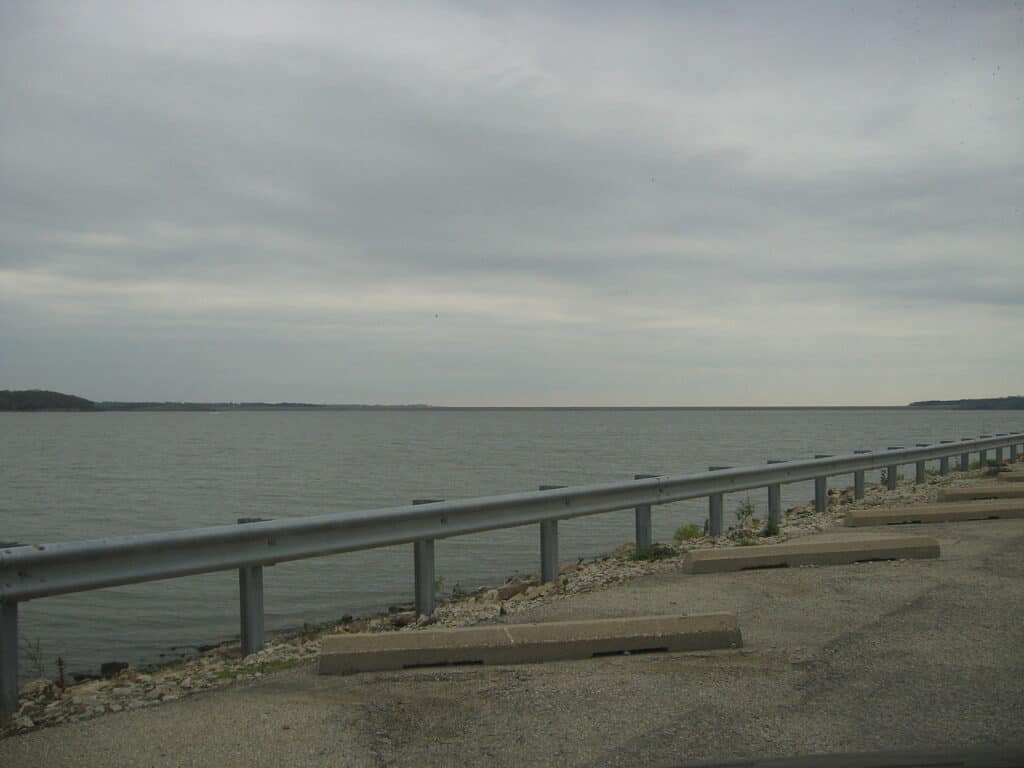
Mercenary318 / I, the copyright holder of this work, hereby release it into the public domain. This applies worldwide.
- Surface Area: 7,000 acres
- Max Depth: 55 Feet
- Camping/Overnight Available: Yes
- Boating/Docks Available: Yes
- Swimming Permitted: Yes
- Fishing Permitted: Yes
- Best For: Important Water Source For Kansas, Popular Recreational Area, Clinton State Park, Clinton Lake Museum
Clinton Lake is located in the northeastern corner of Kansas and serves as flood control, water supply, and recreation. The surrounding Clinton State Park provides over fifty miles of hiking, equestrian and mountain bike trails, an eighteen-hole golf course, a model airplane airport, and the Clinton Lake Historical Society Museum. Additional amenities and activities include three disc golf courses, geocaching, hunting, picnicking, boating, fishing, and wildlife viewing; this lake has it all!
Wildlife viewing is spectacular at Clinton Lake with species of many varieties and types in great abundance including white-tail deer, quail, wild turkey, doves, rabbits, squirrels, bald eagles, great blue heron, gulls, cormorants, American white pelicans, and Canadian geese. The fishing is excellent with stocked species of blue catfish, smallmouth bass, and channel catfish.
Clinton State Park has a one-acre children’s fishing pond for younger guests. There is something for the whole family with twenty-five miles of trails for hiking and biking, a five-mile cross-country ski trail, an archery range, campsites and cabins, boat rentals. Hunting for deer, quail, turkey, waterfowl, dove, rabbit and squirrel is another reason why the lake is one of the most popular outdoor recreational areas in Kansas.
Melvern Lake
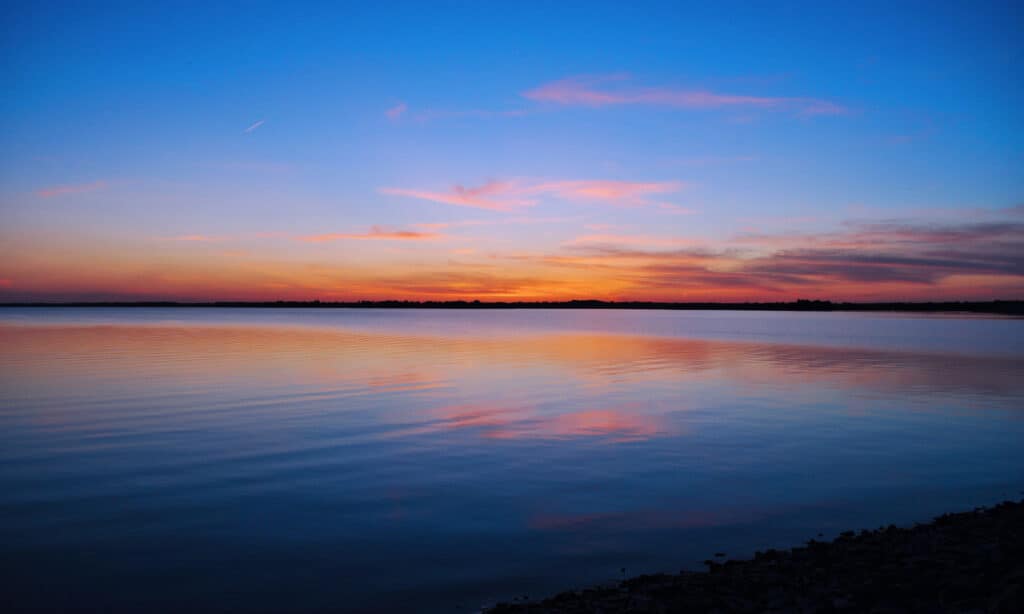
dandtakesyour.photos/Shutterstock.com
- Surface Area: 6,930 acres
- Max Depth: 60 Feet
- Camping/Overnight Available: Yes
- Boating/Docks Available: Yes
- Swimming Permitted: Yes
- Fishing Permitted: Yes
- Best For: Eisenhower State Park, Bass & Channel Catfish, Heated Indoor Fishing Dock, Melvern Wildlife Area
Melvern Lake began as flood damage reduction, outdoor recreation, water supply storage, fish and wildlife management, and downstream water quality improvement. The Dam of the same name helps assist the mitigation damage from the frequent flooded Marais des Cygnes River. The lake has six campgrounds and parks around its waters offering amenities and activities such as water skiing, tubing, powerboating, canoeing, pontooning, kayaking, three swimming beaches, boat ramps, and fishing piers.
Anglers will find smallmouth bass, channel catfish, and largemouth bass. They may also catch flathead catfish, bluegill, crappie, blue catfish, sauger, striped bass, spotted bass, walleye, and sunfish. The lake’s main boat ramp is located in the Coeur d’ Alene Park on the south shore near the dam. The marina even provides a heated, indoor fishing dock!
The Melvern Wildlife Area supports many types of wildlife open for viewing and hunting with permission. Hunting white-tailed deer, eastern wild turkey, bobwhite quail, and squirrels is popular in this area. The lake also provides a small fishing and swimming pond for children at Outlet Park, located near the Melvern Dam.
Kirwin Reservoir
[caption: Kirwin Reservoir is an important body of water for flood control and area irrigation, and it’s one of the best walleye fishing spots in Kansas.]- Surface Area: 5,079 acres
- Max Depth: 49 Feet
- Camping/Overnight Available: Yes
- Boating/Docks Available: Yes
- Swimming Permitted: Yes
- Fishing Permitted: Yes
- Best For: Kirwin National Wildlife Refuge, Flood Control & Area Irrigation, Top Five In Kansas For Walleye
Kirwin Reservoir is in the northwestern area of Kansas, near the Nebraska border. Originally proposed for irrigation and flood prevention purposes, the Kirwin National Wildlife Refuge was added later to promote and foster wildlife with special attention to migratory birds. The reservoir is also used for hunting and fishing.
Walleye fishing is the main attraction at Kirwin Reservoir, earning it a rank in the top five spots in the state. Anglers have been known to catch black crappie, channel catfish, largemouth bass, smallmouth bass, and wiper.
Kirwin National Wildlife Refuge provides home and shelter to many different animals. White-tailed deer, hawks, owls, pheasants, prairie chickens, bobwhite quail, Rio Grande turkey, wintering, bald and golden eagles, mule deer, cormorants, and pelicans call it home. Popular for hunting waterfowl, doves, pheasants, quail, turkey, prairie chickens, snipe, coots, cottontail rabbits, and fox squirrels at Kirwin Reservoir during the regulated seasons.
Largest Lake In Kansas
Milford Lake
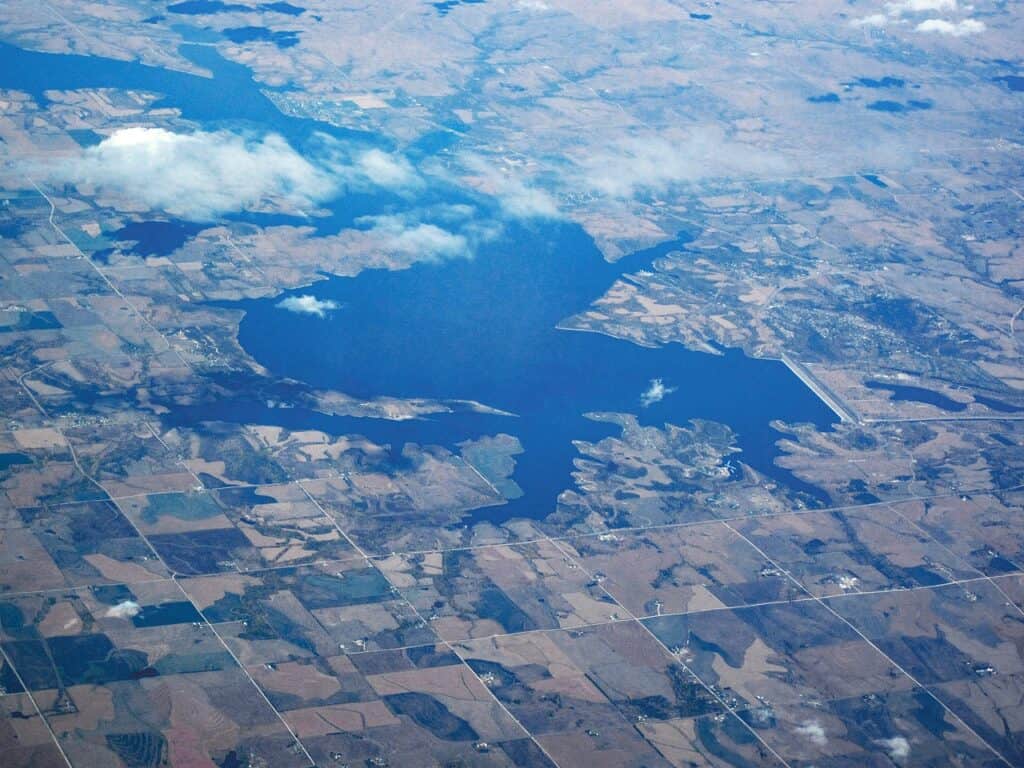
James St. John / flickr – License
- Surface Area: 15,814 acres
- Max Depth: 65 Feet
- Camping/Overnight Available: Yes
- Boating/Docks Available: Yes
- Swimming Permitted: Yes
- Fishing Permitted: Yes
- Best For: Most Popular Fishing Lake In Kansas, Smallmouth Bass Fishing, Giant Crappie, Fishing Tournaments
Milford Lake is the largest lake in Kansas and the most popular for fishing! The main catches reported were smallmouth bass, walleye, and blue catfish. Known by many as the “Lake of Blue Water” reflecting on the beautiful hues of blue the lake boasts. If you plan to stay awhile, amenities around the lake include private and public campsites, RV stations, cabin rentals; and for the glampers, three high-end housekept cabins with heat and A/C.
There is something for everyone here. A wildlife viewing tower, dedicated jet-ski beach, Milford State Park’s private yacht club, Sailboat Cove, sandy beaches, and picnic shelters provide a well rounded experience for all. Anglers expect to see regular fishing tournaments at the lake finding the typical species of black bass, bluegill, catfish, largemouth bass, perch, smallmouth bass, spotted bass, striped bass, sunfish, walleye, and white bass. Shore fishing is said to be great on the lake with several boat ramps to get you out into deeper waters and hook the next trophy crappie!
Visitors can also explore the Milford Wildlife Area covering nearly nineteen thousand acres of public land. Hunting and trapping are permitted regulated times of the year for deer, quail, pheasant, prairie chicken, duck, goose, rabbit, turkey, squirrel, raccoon, muskrat, and beaver. Photographers and wildlife enthusiasts will want to visit the wetlands north of the lake along the Republican River for opportunities to view bald eagles, golden eagles, great blue herons, chipping sparrows, pileated woodpeckers, mergansers, Baltimore orioles, orchard orioles, warblers, yellowthroats, and yellow-billed cuckoos.
The United States Largest Wetland, In Central Kansas
Cheyenne Bottoms
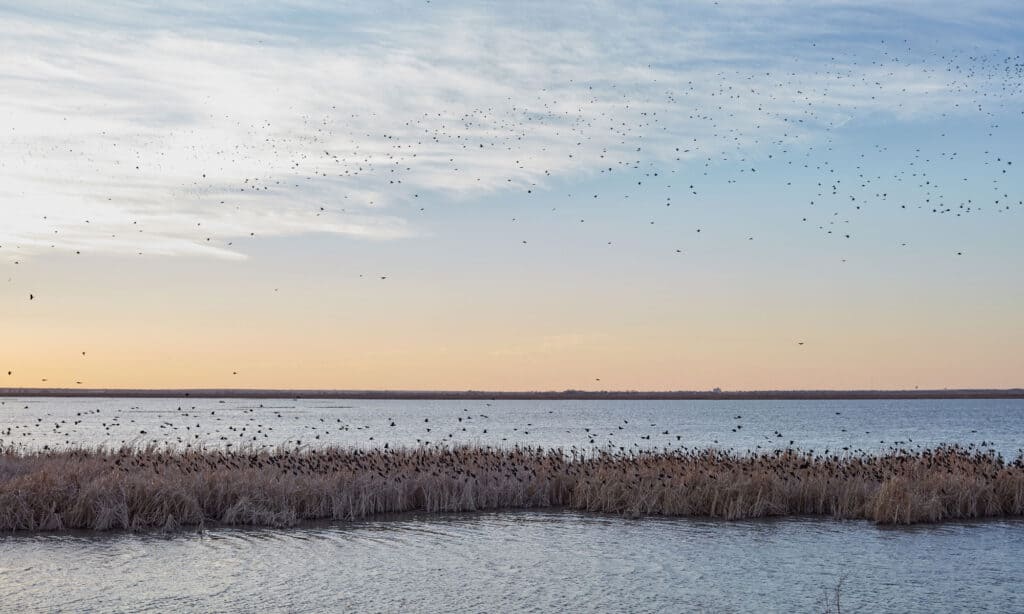
iStock.com/Colby Lysne
- Surface Area: 41,000 acres
- Max Depth: 4 Feet
- Camping/Overnight Available: Yes
- Boating/Docks Available: No
- Swimming Permitted: No
- Fishing Permitted: Yes
- Best For: Wildlife Viewing, Hunting, Internationally Significant Wetland Complex
The Cheyenne Bottoms is over forty thousand acres of internationally significant wetland located nearly in the middle of Kansas. Once a fishing and hunting area to Cheyenne Native Americans, the area is managed today by the Kansas Department of Wildlife and Parks. It’s a highly unique and diverse wetland complex supporting upwards of three hundred types of birds and countless other mammals, reptiles, amphibians, and fish.
The typical fish species include bullhead, common carp, flathead catfish, and channel catfish. Other, less frequent species reported are crappie and largemouth bass. A wide range of reptiles and amphibians live in the wetlands including the Great Plains toad, Woodhouse’s toad, Blanchard’s cricket frog, boreal chorus frog, western narrow-mouthed toad, plains leopard frog, American bullfrog, plains spadefoot, western tiger salamander, prairie lizard, Great Plains skink, six-lined racerunner, North American racer, prairie kingsnake, spiny softshell, western massasauga, prairie rattlesnake, diamond-backed watersnake, ornate box turtle and snapping turtle.
In addition to the diverse fish, reptile and amphibian populations many different types of mammals inhabit the area. Some of the common types of mammals that call the Cheyenne Bottoms their home include hispid pocket mouse, ord’s kangaroo rat, hispid cotton rat, prairie vole, southern bog lemming, muskrat, fox squirrel, eastern red bat, Virginia opossum, coyote, least weasel, mink, American badger, striped skunk, raccoon, nine-banded armadillo, black-tailed jackrabbit, eastern cottontail, and the Plains pocket gopher.
Up Next
- The 5 Best Fish to Catch in Kansas
- Discover the 9 Largest Animals in Kansas
- 5 Biggest Spiders in Kansas
The post Best Lakes for Hunting and Fishing in Kansas appeared first on AZ Animals.
from Animal News, Facts, Rankings, and More! - AZ Animals https://ift.tt/ZXDydg0